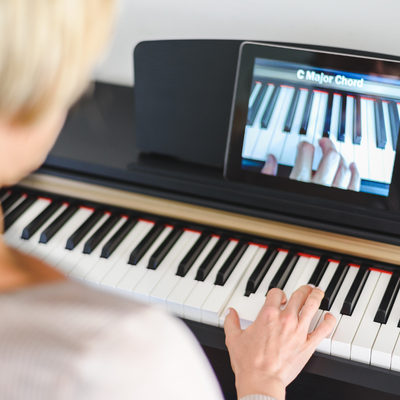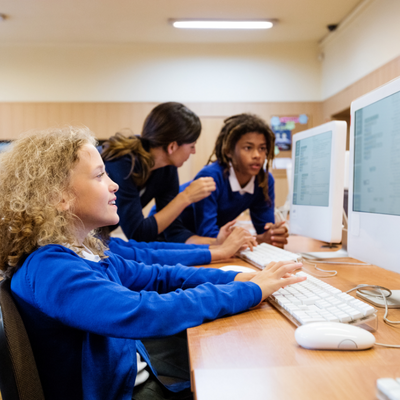Not All Screen Time is Equal
Jan 15, 2023
According to the American Association of Child & Adolescent Psychiatry (AACAP), American children between the ages of 8 and 12 spend between 4 and 6 hours per day looking at some kind of display screen. This might be watching TV, using a computer, playing games on a tablet, or accessing social media on a smart phone. The same study reports that screen time for teenagers could be as much as 9 hours per day. Since, according to the Centers for Disease Control (CDC), kids in this age range should be getting between 8 and 12 hours of sleep each night, and most generally attend school for another 8 or so hours, they might have only between 2 and 4 hours per day of non-screen time! (This assumes that school time and screen time do not overlap.)

To Screen or Not to Screen
These statistics are concerning for a whole host of reasons. Many screen-focused activities are done indoors and alone, thus reducing the time available to play outside and engage socially with other people. Computer games, online videos, social media, and television can be entertaining and engaging, but these often present little in the way of mental stimulation. However, there are screen-focused activities that do provide mental stimulation. The goal should not be to eliminate screen time altogether, but to prioritize the screen-focused activities that produce beneficial results.
Learning is about Transfer of Knowledge

One of the primary ways people learn is by working with or listening to someone who knows more about a subject than they do. In the time before the Internet, someone who wanted to learn to play the piano would find a piano teacher and arrange to take lessons. Self-paced options like John Thompson's Modern Course for the Piano were also available, but essentially this was like taking lessons from a teacher in absentia.
The Internet as a Medium for Learning

Today, learning still occurs through the transfer of knowledge from one person to another. However, the Internet expands the options. The Internet is a treasure trove of information. It is a fantastic resource, not only for just about any facts or trivia one could want to know, but also as a teaching medium. No longer are we limited to the one piano teacher in the small town where we live. Instead, we can locate and engage a teacher from anywhere in the world. We still have self-paced options, too, but these are now rich, multimedia experiences that allow us to hear how the piece we are learning should sound and see a video showing the hands of someone who is playing it correctly. There are even apps that can provide real-time feedback to let us know whether we are playing the piece correctly and track our progress as we improve.
Construction Toys and Art Supplies

Another productive use of screen time is one where the computer, smart phone, or tablet is the tool that makes it possible to create something. Toys like Lego® brand bricks, Lincoln Logs, Tinkertoys, Erector sets, and toy blocks make it possible for kids to build things. The act of building teaches them principles and concepts from architecture and mechanical engineering. Crayons, markers, and paints allow children to express themselves creatively and artistically.
The Computer as a Medium for Creation

The computer, too, can be a medium to teach problem solving, logical reasoning, algorithmic thinking, and creative expression. Learning to program a computer teaches kids how to analyze a task and identify the discrete steps needed to complete it. Many of the things we as humans do everyday, we do without consciously thinking about how, exactly, we do them. Therefore, we don't get much practice in giving precise and specific instructions. This YouTube video shows a father challenging his children to write instructions to tell him how to make a peanut butter and jelly sandwich. Clearly, he's being intentionally difficult, but the point should be clear. Most people know how to make a peanut butter and jelly sandwich without having to be told each and every step in the process. Not so with computers! Writing a computer program requires being able to not only identify all the necessary steps, but also to anticipate all the places where something might go wrong. These are valuable skills even for one who does not plan to become a software developer.
Developing 21st Century Skills
At the Excalibur Solutions STEM Academy, we have projects and lessons that ask students to use the computer to draw pictures, tell stories, create games, build circuits, and model phenomena. These activities teach students a wide range of essential 21st century skills. Many of these are STEM skills, particularly in the Technology and Engineering disciplines. However, many are so-called soft skills like communication, thinking, planning, and organizing. We consider these to be productive uses of screen time because the device with the screen becomes an integral part of something that helps the students grow, develop, and gain confidence in their abilities.
It's a Balancing Act
In conclusion, we as a society should take a critical look at the amount of time our children spend looking at computer and television screens. However, we must also remember that there are many positive uses for these screens, and those that teach and facilitate growth are the ones that we should prioritize. We should not deny our students access to all that computers and the Internet have to offer.
Stay connected with news and updates!
Join our mailing list to receive the latest news and updates from our team.
Don't worry, your information will not be shared.
We hate SPAM. We will never sell your information, for any reason.


